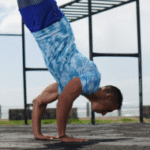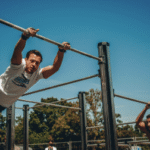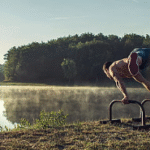Comparing Different Contrast Therapy Protocols
Okay, let’s dive into a detailed comparison of **different Contrast Therapy protocols**, specifically framed for an audience in the **USA** as of April 14, 2025.
**Introduction: What is Contrast Therapy?**
Contrast Water Therapy (CWT), commonly known as contrast therapy, involves the alternating immersion of the body or specific limbs into hot water and then cold water. It’s a popular recovery modality used by athletes and individuals in the US seeking benefits like reduced muscle soreness, decreased inflammation, improved circulation, and faster perceived recovery after exercise or injury. While the basic concept is simple, the specific protocols—combinations of temperature, time, and cycles—can vary significantly. This guide compares common protocols and discusses the evidence behind them.
**Key Variables That Define a Contrast Therapy Protocol:**
Different protocols manipulate several key factors:
- **Hot Water Temperature:** The target temperature for the warm/hot immersion phase.
- **Cold Water Temperature:** The target temperature for the cold immersion phase.
- **Temperature Gradient:** The difference between the hot and cold water temperatures.
- **Hot Immersion Duration:** How long you stay in the hot water during each cycle.
- **Cold Immersion Duration:** How long you stay in the cold water during each cycle.
- **Time Ratio:** The ratio of time spent in hot water versus cold water (e.g., 3:1, 1:1).
- **Number of Cycles:** How many times the hot-to-cold alternation is repeated.
- **Total Session Duration:** The overall time spent performing the contrast therapy.
- **Starting Temperature:** Whether the session begins with hot or cold immersion.
- **Ending Temperature:** Whether the session concludes with hot or cold immersion.
- **Immersion Area:** Whether it involves specific limbs (legs, arms) or the whole body (up to the neck).
**Commonly Cited Protocols and Variations Used in the USA:**
While numerous variations exist, here are some frequently discussed protocols:
* **Protocol 1: The “Classic” 3:1 or 4:1 Hot-to-Cold Ratio**
* **Hot Phase:** 3 to 4 minutes in hot water (typically **100°F – 104°F / 38°C – 40°C**, though some protocols go up to 111°F/44°C if tolerated safely).
* **Cold Phase:** 1 minute in cold water (typically **50°F – 59°F / 10°C – 15°C**).
* **Cycles:** Repeated 3 to 5 times.
* **Total Duration:** Approximately 12 to 20 minutes.
* **Start/End:** Often starts with hot and ends with cold (especially if inflammation control is a key goal).
* **Rationale (Theory):** Longer heat exposure promotes vasodilation and relaxation, while the shorter cold burst provides a vasoconstrictive stimulus without excessive cold stress.
* **Protocol 2: The 1:1 Hot-to-Cold Ratio**
* **Hot Phase:** 1 minute in hot water (similar temperature range as above).
* **Cold Phase:** 1 minute in cold water (similar temperature range as above).
* **Cycles:** Repeated multiple times (e.g., 7 to 10 cycles).
* **Total Duration:** Approximately 14 to 20 minutes.
* **Start/End:** Can start with either, often ends with cold.
* **Rationale (Theory):** Provides more frequent shifts between vasodilation and vasoconstriction within a given timeframe, potentially enhancing the “pumping” effect. May feel simpler to time for some users.
* **Protocol 3: Variable Temperature Protocols**
* **Concept:** Adjusting temperatures based on tolerance or specific goals. For example, using slightly warmer cold water (**~60°F / 15°C**) might be more tolerable for beginners or those highly sensitive to cold, while still providing a contrast. Similarly, the hot temperature might be adjusted within the safe range.
* **Importance:** The *difference* or gradient between the hot and cold temperatures is considered important for driving the physiological response. A larger gradient (within safe limits) might theoretically produce a stronger effect.
* **Protocol 4: Limb vs. Whole Body Immersion**
* **Limb:** Immersing only the affected limbs (e.g., legs after running). Allows for potentially more extreme temperatures as the systemic cardiovascular stress is lower.
* **Whole Body:** Immersing the body up to the neck. Provides systemic effects but requires more caution regarding temperatures and potential cardiovascular responses. Widely available in US sports recovery centers with full plunge tubs.
**Comparing the Protocols: What Does the Science Say?**
This is where it gets complex:
* **Lack of Definitive Superiority:** Despite the popularity of specific ratios like 3:1, there is **limited high-quality scientific evidence to definitively conclude that one specific protocol (in terms of ratio, exact temperature, or duration within reasonable limits) is significantly more effective than another** for common outcomes like reducing Delayed Onset Muscle Soreness (DOMS) or improving performance recovery.
* **Benefit vs. Passive Rest:** Many studies show that *some form* of contrast therapy often yields better results (especially for perceived recovery and DOMS) compared to doing nothing (passive rest).
* **Mechanism Debate:** The exact physiological mechanisms, particularly the extent of the “vascular pumping” effect deep within muscles, remain debated. Benefits might stem more from pain modulation (analgesia), reduced perception of soreness, placebo effects, and general nervous system responses rather than dramatic flushing of metabolic waste.
* **Factors Influencing Choice in Practice:**
* **Goal:** If reducing acute swelling is paramount, ensuring sufficient cold exposure and ending with cold might be prioritized. If relaxation is key, the overall experience and comfortable heat are important.
* **Individual Tolerance:** This is perhaps the most critical factor. An “optimal” protocol on paper is useless if the individual cannot tolerate the temperatures or durations safely and comfortably. What works well for a professional athlete may not suit a recreational user.
* **Practical Constraints (USA Context):** Availability often dictates the protocol. Gyms or spas in the US might have preset hot tub and cold plunge temperatures. The ease and speed of switching between hot and cold facilities also impact feasibility.
* **Time Availability:** Shorter cycles or total duration may be necessary for busy schedules.
**Practical Recommendations for Users in the USA:**
Given the lack of definitive evidence for one “best” protocol, focus on safety, consistency, and individual response:
- **Start Conservatively:** If new to contrast therapy, begin with moderate temperatures you can comfortably tolerate (e.g., hot around 100-102°F, cold around 55-60°F) and shorter durations (e.g., 2 minutes hot, 1 minute cold, or 1:1, for a total of 10-15 minutes).
- **Prioritize Consistency:** Regular use of a protocol you can stick to is likely more beneficial than infrequent attempts at an extreme protocol.
- **Listen to Your Body:** This is paramount. Adjust temperatures or durations based on how you feel. Do not endure extreme pain, excessive shivering, or numbness. Exit immediately if you feel dizzy, lightheaded, or unwell.
- **Focus on the Contrast:** Ensure there is a noticeable *difference* between the hot and cold temperatures, within safe ranges.
- **End on Cold (Generally Recommended):** Finishing with cold immersion is often suggested to maximize vasoconstriction and potentially limit any lingering inflammation.
- **Consult Experts (If Accessible):** Athletes working with athletic trainers or physical therapists in the US can seek personalized protocol recommendations tailored to their sport, training load, and recovery needs.
**Safety Reminder:**
Always remember the risks associated with temperature extremes. Consult a doctor before starting CWT if you have cardiovascular conditions, high blood pressure, circulatory problems (like Raynaud’s), diabetes (potential for impaired sensation), are pregnant, or have other significant health concerns. Never plunge alone, especially when starting.
**Conclusion:**
While various contrast therapy protocols exist in the USA, differing in temperatures, timings, ratios, and duration, there is currently **no strong scientific consensus favoring one specific protocol over others for athletic recovery.** Common protocols like 3:1 or 1:1 hot-to-cold ratios are often used, but the best approach is likely individualized. Focus on finding a protocol with a noticeable, safe temperature contrast that you can tolerate comfortably and perform consistently. Prioritize listening to your body, ensuring safety, and potentially consulting with a sports medicine or recovery professional for personalized advice, rather than adhering rigidly to one specific timing ratio touted as definitively “best.”

Comparing Different Contrast Therapy Protocols
Route
Calisthenics Gym Houston Functional Bodyweight Training
Secondary phone: (346) 483-3195
Email: info@calisthenicsclubhouston.com
URL: https://calisthenicsclubhouston.com/
Monday 6:00 AM - 7:00 PM Tuesday 6:00 AM - 7:00 PM Wednesday 6:00 AM - 7:00 PM Thursday 6:00 AM - 7:00 PM Open now Friday 12:00 PM - 6:30 PM Saturday 9:45 AM - 12:00 PM Sunday 3:00 PM - 5:00 PM





